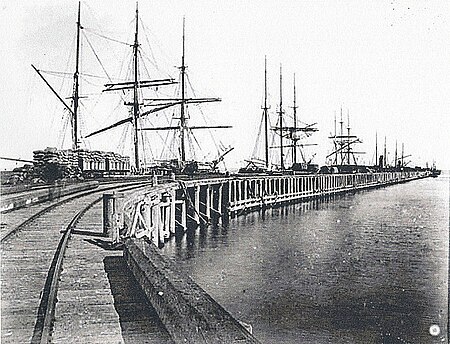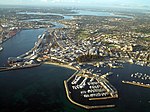Fremantle Long Jetty

Fremantle Long Jetty was constructed in 1873 to replace the smaller South Jetty which had become too small for the large amounts of vessels entering the colony in Western Australia. The jetty lies in Bather's Bay which has been an occupation site since the Swan River Colony was established in 1829. It was a centre of trade and communications that served Fremantle and Perth until Fremantle Harbour was opened. An increased amount of shipping made it necessary to improve the harbouring facilities by the late 1860s. Long Jetty was built as a less expensive alternative to building a harbour at the mouth of the Swan River due to a lack of funds and technological shortcomings.In July 1984 the Maritime Archaeology Department of the Western Australian Museum was notified of plans to construct a marina for the 1987 America's Cup that would be close to the remains of the Long Jetty. This prompted an archaeological excavation to ascertain the importance of the site.
Excerpt from the Wikipedia article Fremantle Long Jetty (License: CC BY-SA 3.0, Authors, Images).Fremantle Long Jetty
Mews Road,
Geographical coordinates (GPS) Address Nearby Places Show on map
Geographical coordinates (GPS)
| Latitude | Longitude |
|---|---|
| N -32.0589 ° | E 115.741 ° |
Address
Mews Road
6160
Western Australia, Australia
Open on Google Maps










